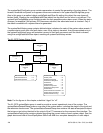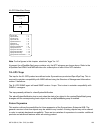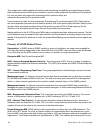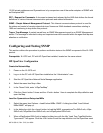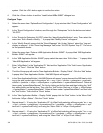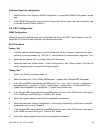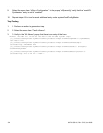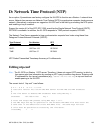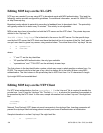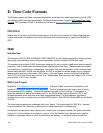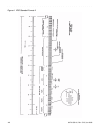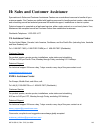136 997-01530-01, Rev. C-25, Jan 2008
SSSSSSSSSSSS SSSS SSSSSS SSSSSSS S SSS SSSSSSS
1
Editing MD5 keys on the XL-GPS
NTP keys are needed if you are using NTP in broadcast mode with MD5 authentication. This (and the
following) section provide configuration guidelines. For additional information, consult Dr. Mills NTP site
at: http://www.ntp.org
Broadcast mode adjusts its periodicity according to feedback from its broadcast client. The periodicity
will typically settle-out to about every 2 minutes. This activity is not adjustable.
MD5 private keys have to be edited on both the NTP server and the NTP client. The private keys are
defined in the “ntp.keys” file.
The NTP client “ntp.keys” file is identical to the one on the NTP server. For the specific keys
used by the NTP server, the NTP client must have the identical line in its version of the file. You’ll want to
use your own hard-to-guess key names, using random letters. The critical lines of the “ntp.keys” file are:
1 M symmetricom
2 M TTXL-GPS
where:
• “1” and “2” are the key identifiers
• “M” specifies MD5 authentication, the only type available
• “symmetricom” and “TTXL-GPS” are the arbitrarily chosen keys
The first column is the key identification number, which may range in whole positive numbers from 1 to
65,535. The second column is the type of key, which is always set to the letter M when using MD5
authentication. The third column is the private key that is ASCII text from 1 to 32 characters in length.
Up to eight MD5 can be established.
Editing MD5 keys on the NTP Client
For NTP client authentication, the line trustedkey 1 2 in the “ntp.conf” file is required to enable the
private keys 1 and 2 from the “ntp.keys” file. The line bclient is required for broadcast time packets to
be processed by the NTP client. In this case, sample information from a client “ntp.conf” file might look
like:
trustedkey 1 2
bclient
Network Time Protocol (NTP) does not permit comments in the ntp.keys files. Inserting comments will
prevent the ntp.keys files from being parsed correctly and turns off authentication at initialization.
Sample information in a client “ntp.keys” file might look like:
1 M symmetricom



